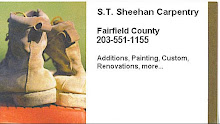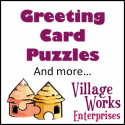
Are you an entrepreneur?
You might be. Inside you there just might be an entrepreneur waiting to tear out.
Here are the top 10 ways to know if you’re an entrepreneur. (And for those of you that are already entrepreneurs, you can nod your head as we go along…Or disagree with me! Or add your own points!)
You’re passionate. Passion counts for a whole lot when it comes to being an entrepreneur. Without it, you’re dead before you even start.
You’re always looking for opportunities. Entrepreneurs are opportunity-seekers. Everything is an opportunity. Failures are even an opportunity.
You always think to yourself, “I can do that better.” You might know nothing about the retail business, but every time you walk into a big box store you have a thousand ideas on how to make it a better experience. Combined with your eye for opportunity, you can’t help but believe there’s a better way of doing things.
You want to live your work. Work isn’t a means to an end. It isn’t a way of collecting a paycheck and going home. You’re dreaming of something more than that, where you can live and breathe work. Not because you want to work more, you want to work smarter. You want your work to mean something. You want to experience something more than shuffling to the office at 8am, leaving at 5pm and forgetting what happened for that day.
You’re dreaming miles ahead while focused on what you’re doing right now. You’re a dreamer, but not a daydreamer. You’re dreaming a plan ahead while working constantly at achieving success on the details today. You’re a big-thinker but you don’t lack the ability to focus on details. Accomplish the little tasks is moving the ball forward for you…towards the big dream.
You’re an ego-maniac. You look at your boss and shrug. You know things could be better, and you believe strongly in your own abilities. You’ve got a big, healthy ego. It’s not unwarranted, but it’s not proven just yet either. Still, ego is important - because it’ll help you take risks, power forward and succeed.
You’re prepared to say, “I don’t know, but I’ll figure it out.” Your ego doesn’t preclude you from admitting that you don’t know something. Too many people fake their way through life, or duck their head when they don’t know the answer. Your response is to jump into it, learn what you can, move quickly and get some damn answers.
You’re a strategist. You’re not just thinking about tomorrow. You’re thinking much further ahead than that. This is a trait you share with a lot of people - career ladder-climbers and “cover your ass” employees. The difference is that you’re also a dreamer, and strategy + dreaming is very powerful indeed.
You’re a builder. You like to create things. You don’t care about recognition, praise from your boss, awards and money as much as you care about building something remarkable, and having others enjoy it and benefit from it.
You want control. You watch the world spin, shake and bumble around you and want to harness that more. You watch your boss and co-workers shuffle around each and every day and you want to rattle some chains. You want control. Seth Godin calls them torchbearers. You want to bear the torch.
So, are you an entrepreneur?
Tags: business strategy, ego, entrepreneur, entrepreneurship, passion, seth godin, starting a business strategy
About 'Top 10 Ways You Know You’re An Entrepreneur'
This entry was posted on February 11th 2007 by Ben Yoskovitz.
It was posted in Entrepreneurship














